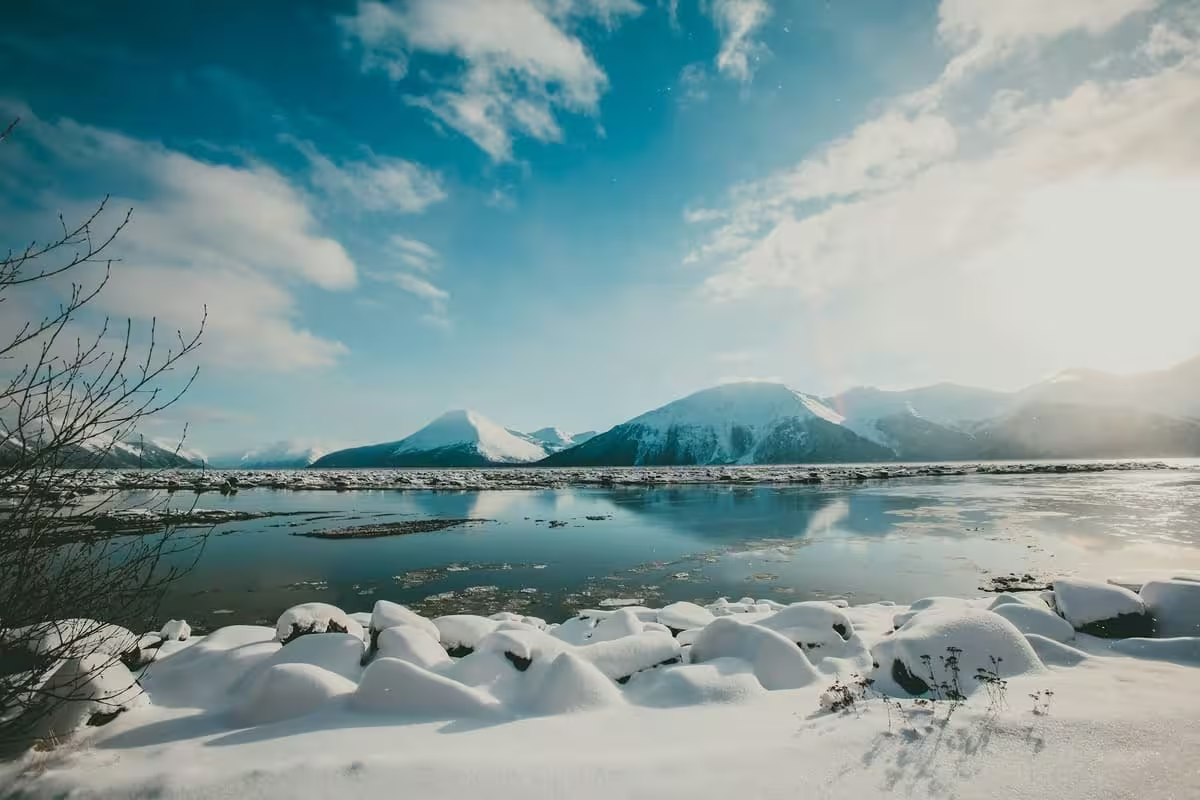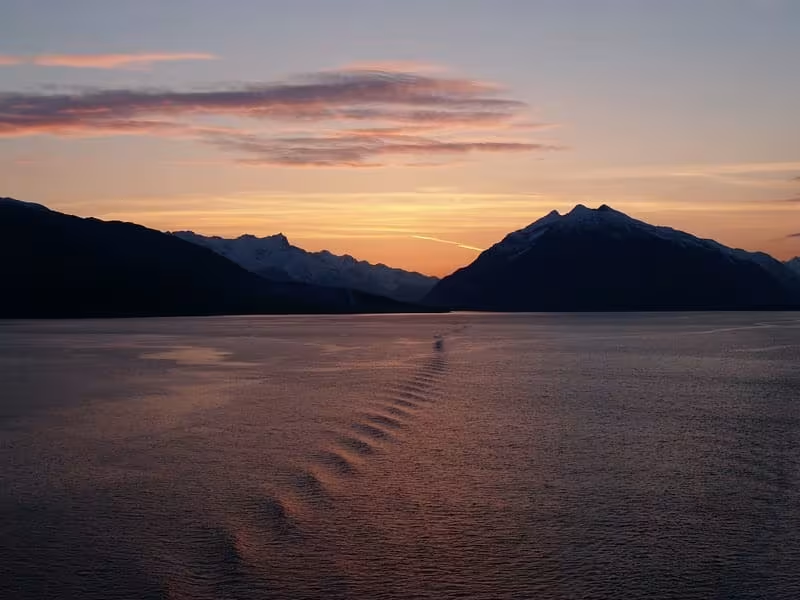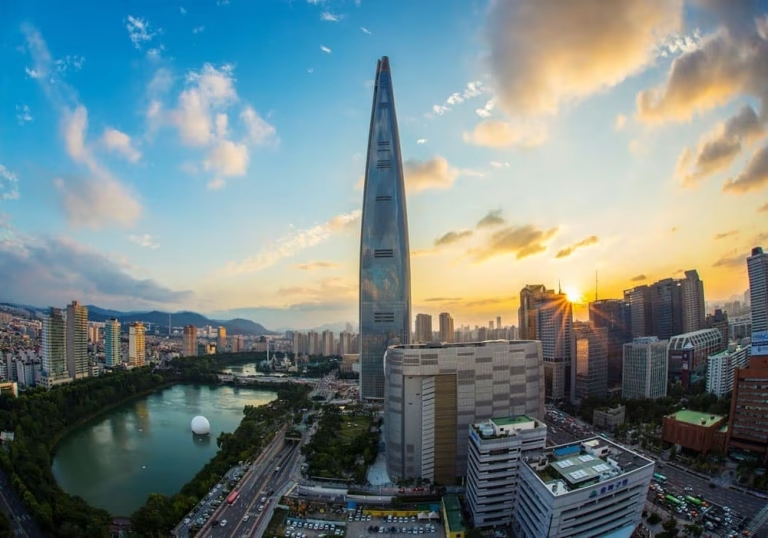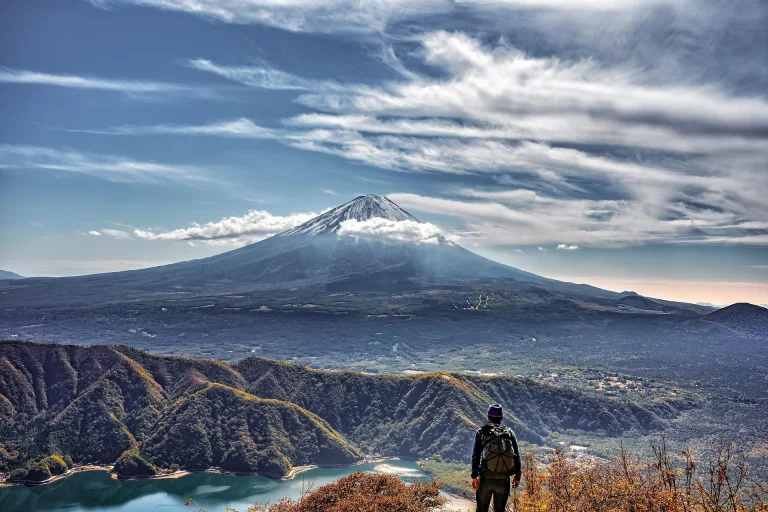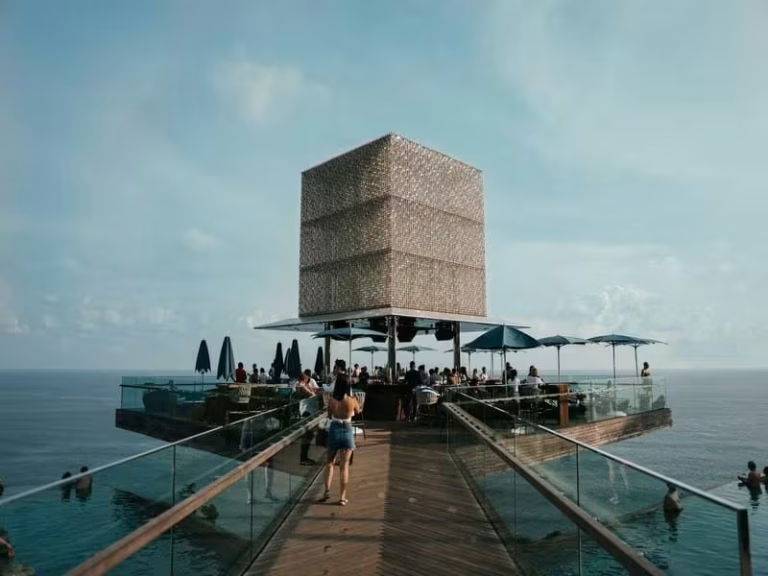Best Time to Visit Alaska: 2025 Ultimate Travel Guide
Alaska. Just the name itself conjures images of towering, snow-dusted peaks, vast, untouched wilderness, and wildlife that roams free and untamed. As someone who has spent seven years crisscrossing this globe, seeking out the very soul of each destination, Alaska holds a truly special place in my heart.
It’s a land that demands your presence, your attention, and in return, it offers experiences that resonate long after you’ve left its wild embrace. Many ask, “When is the best time to visit Alaska?” The truth, I’ve learned, is that Alaska doesn’t have just one “best” time; it has many, each unveiling a different facet of its magnificent character.
For most, the sweet spot, balancing good weather, abundant wildlife, and accessible adventures, lies between mid-May and mid-September. But the real magic happens when you align your visit with what you hope to feel and see.
This isn’t just about listing seasons and activities. It’s about sharing the pulse of Alaska, the subtle shifts in the air, the quality of light, and the unique encounters that define each period.
We’ll journey through the vibrant burst of summer’s midnight sun, the crisp allure of autumn’s golden hues, the mystical dance of winter’s northern lights, and the gentle awakening of spring.
Alaska Through the Seasons: More Than Just Dates
To truly grasp the best time for your Alaskan adventure, you need to understand its distinct rhythms. Each season paints the landscape with a different palette and offers a unique sensory experience.
Spring in Alaska (April – May): The Great Awakening
Spring in Alaska is a time of dramatic transformation. As the heavy cloak of winter begins to lift, there’s a palpable energy in the air. You can almost hear the land sighing as it awakens.
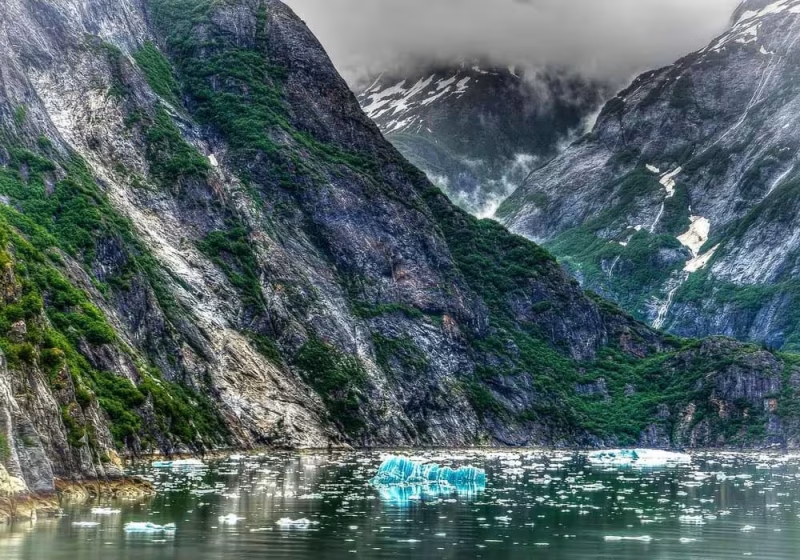
- What to Expect: Temperatures are on the rise, though still cool, ranging from the 30s to low 50s °F (-1 to 12 °C). “Breakup” season (when ice and snowmelt cause muddy conditions and swollen rivers) is a real thing, especially in April and early May – I recall one early May trek near Talkeetna where the trails had a soundtrack of trickling meltwater and the squelch of thawing earth. However, late May often brings an explosion of wildflowers and increasingly longer, brighter days that feel like a gift.
- The Vibe: It’s a quieter time, with fewer crowds than summer. There’s a raw beauty to the landscape as it sheds its winter coat. You’ll find locals emerging with a renewed spirit, eager for the coming warmth.
- Experiences:
- Early Wildlife Spotting: Bears begin to emerge from their dens. Migratory birds start to arrive in spectacular numbers, particularly at places like the Copper River Delta.
- Late Season Skiing/Snow Activities: Some higher elevations still offer snow sports in early spring.
- Lower Prices & Fewer Crowds: This is a shoulder season, so you can often find better deals on accommodations and tours.
- My Take: Late May is particularly special. The landscape is impossibly fresh, the summer throngs haven’t arrived, and there’s a sense of eager anticipation. It’s a fantastic time for photographers who appreciate dramatic skies and the vibrant, almost electric green of new growth. However, be mindful that some attractions and roads, especially those at higher elevations or in more remote parks, may still be in the process of opening up for the season. Always check ahead!
Summer in Alaska (June – August): The Land of the Midnight Sun
This is Alaska in its full glory, bustling with life, activity, and seemingly endless daylight. For many, this is the quintessential Alaskan experience.

- What to Expect: This is the warmest time of year, with average highs typically ranging from the 60s to low 70s °F (15-23 °C), though interior regions can sometimes reach the 80s °F (27+ °C). Expect rain, especially as summer progresses; Alaska’s weather is famously unpredictable. And yes, mosquitoes can be a nuisance, particularly in June and July, especially in interior and tundra areas.
- The Vibe: Energetic and vibrant. The famed “midnight sun” means you can pack your days full of adventure. Towns are lively, and there’s a buzz of excitement.
- Experiences:
- Peak Wildlife Viewing: This is prime time for seeing bears, moose, caribou, Dall sheep, and a plethora of birdlife. Salmon runs are in full swing, attracting hungry predators.
- National Parks in Full Swing: Denali National Park, Kenai Fjords, Glacier Bay, and others are fully accessible. The Denali Park Road typically opens fully in June, offering iconic views and wildlife encounters (though recent landslide activity has caused closures on a portion of the road, so always verify current conditions with the National Park Service).
- Hiking, Fishing, Kayaking: All outdoor activities are at their peak. The landscapes are lush and intensely green. Kayaking amidst ice floes in Prince William Sound, with seals popping up curiously, is an experience I often recall.
- Cruising: The main cruise season is from May to September, with July and August being the busiest.
- My Take: Summer offers the widest array of activities and the most reliable weather (by Alaskan standards). If it’s your first time and you want to see and do as much as possible, this is your season. The energy of the midnight sun is something you have to experience – hiking at 10 PM with the sun still up is unforgettable! Book everything well in advance, as this is peak season.
Autumn in Alaska (September – October): A Blaze of Glory & Tranquility
As the midnight sun begins to wane, Alaska puts on a spectacular show of color. There’s a crispness to the air, a sense of winding down, and a unique beauty that many, myself included, find utterly captivating.
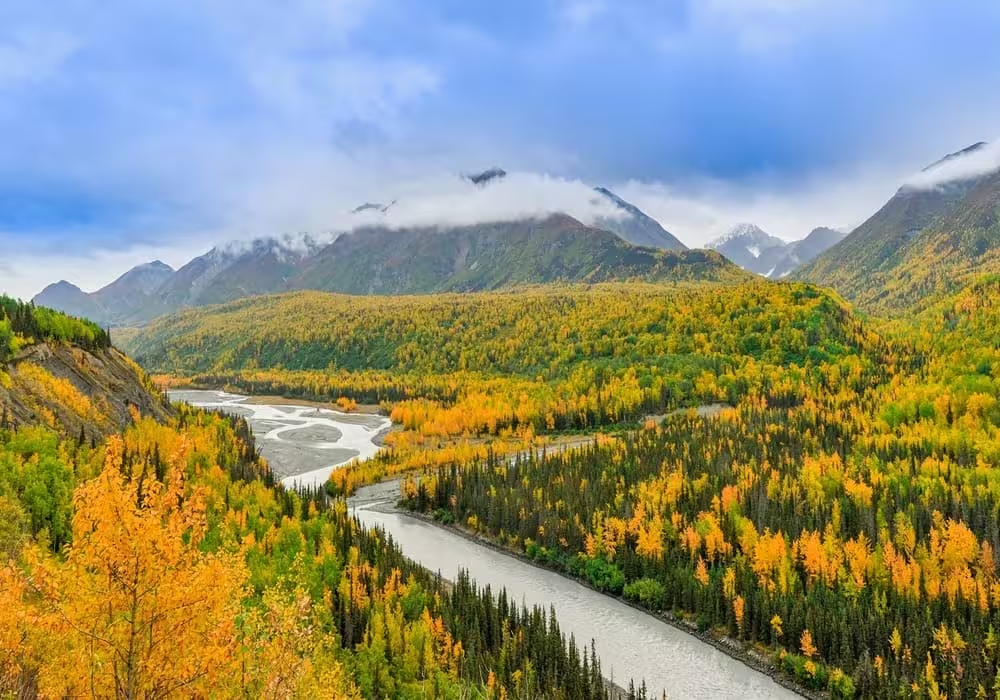
- What to Expect: Temperatures start to dip, ranging from the 40s to 50s °F (4-12 °C) during the day, with cooler nights. September often brings stunning fall foliage – vibrant yellows, oranges, and reds, especially in the interior and Denali region. Rainy days can be more frequent.
- The Vibe: A peaceful transition. The summer crowds thin out, and a more tranquil atmosphere settles over the land. There’s a poignant beauty to the changing seasons.
- Experiences:
- Fall Colors: Denali National Park and the Interior are breathtaking. The tundra transforms into a vast, undulating carpet of crimson and gold. Driving the Denali Highway in mid-September, with the Alaska Range dusted in early snow and the foreground ablaze, is an image seared into my memory.
- Northern Lights (Aurora Borealis): As the nights grow longer and darker, your chances of witnessing the aurora increase dramatically, especially from late September onwards. The first aurora sighting of the season always feels like a sacred welcome.
- Wildlife Prepares for Winter: Bears are actively foraging during hyperphagia (the fall feeding frenzy to build up fat reserves for winter), often found in berry patches. Moose are in their rutting season, and the sound of clashing antlers can sometimes echo through the valleys.
- Shoulder Season Benefits: Significantly fewer crowds at popular spots and potentially lower prices for accommodations and some tours.
- Silver Salmon Fishing: This is a prime time for coho (silver) salmon fishing, known for their acrobatic fights.
- A Local Whisper: I’ve heard from many Alaskans over the years that September is their secret favorite – a time when “Termination Dust” (the first snow on the mountaintops) signals the end of summer, mosquitoes are gone, and the land reveals a raw, intense beauty before winter sets in.
- My Take: September is one of my absolute favorite months in Alaska. The trifecta of fall colors, the burgeoning chance to see the aurora, still-active wildlife, and fewer people creates a truly magical experience. It feels more intimate. Be prepared for mixed weather, though; layers are non-negotiable, and a flexible attitude is key! By October, many tourist services begin to close, and the transition to winter is well underway.
Winter in Alaska (November – March): A Frozen, Magical Wonderland
Winter transforms Alaska into a serene, snow-covered paradise, a realm of hushed beauty and stark contrasts. It’s a time for unique adventures and witnessing one of nature’s most awe-inspiring phenomena: the Northern Lights in their full, glorious dance.
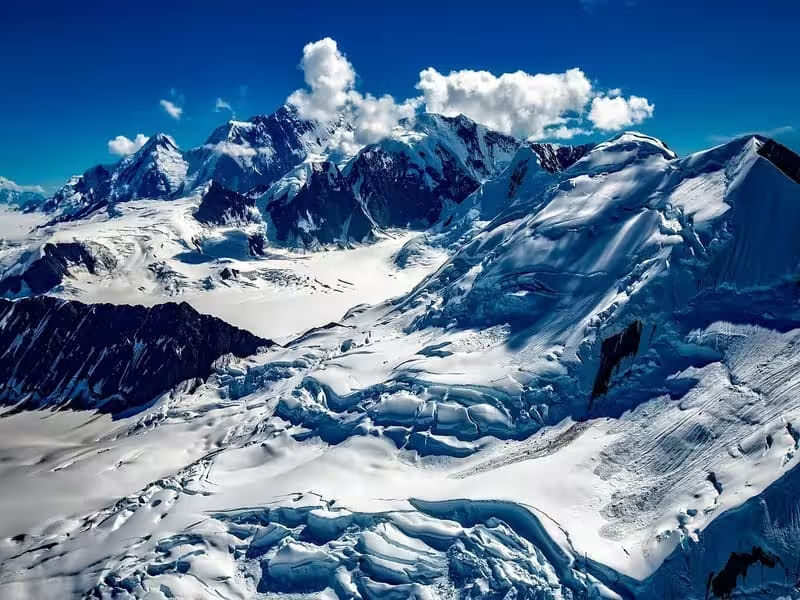
- What to Expect: It’s cold – often profoundly so – with temperatures frequently dropping well below freezing, especially in the Interior and Arctic regions (can be -20°F / -29°C or even colder, a dry, biting cold that demands respect and proper gear). Coastal areas are milder but still distinctly chilly and often snowy. Daylight hours are significantly shorter, particularly around the winter solstice in December, creating a cozy, introspective atmosphere.
- The Vibe: Quiet, deeply peaceful, and almost ethereally beautiful. There’s a profound stillness to the snow-covered landscapes, broken only by the crunch of your boots or the whisper of the wind. It’s a time for hardy souls and those seeking a different, more contemplative kind of Alaskan magic. The crisp air often carries the scent of woodsmoke.
- Experiences:
- Prime Northern Lights (Aurora Borealis) Viewing: This is the season. Dark, clear nights offer the best chances, especially in areas like Fairbanks and further north, away from city lights. I’ve spent hours under the stars near Chena Hot Springs, utterly mesmerized as ribbons of green, pink, and violet light shimmered and pulsed across the heavens – it’s an experience that makes you feel incredibly small and deeply connected to the cosmos. The best viewing is typically from late August to mid-April.
- Dog Sledding: Experience Alaska’s official state sport, gliding through silent, snowy forests behind a team of enthusiastic huskies. It’s an exhilarating connection to Alaska’s heritage.
- Skiing (Nordic & Downhill) & Snowshoeing: Explore pristine winter landscapes at your own pace.
- Winter Festivals: Events like the Iditarod Trail Sled Dog Race (starts early March from Anchorage to Nome) and the World Ice Art Championships in Fairbanks (February-March, showcasing incredible, ephemeral sculptures) are major highlights.
- Unique Wildlife Viewing: While many animals hibernate, some, like moose (often seeking easier travel along plowed roads), caribou, lynx, and ptarmigan (camouflaged in white), can be spotted against the snowy backdrop, their tracks telling stories in the snow. The Chilkat Bald Eagle Preserve near Haines sees a massive congregation of eagles in late fall/early winter (peaking November/December).
- My Take: If the Northern Lights are high on your list, winter is unparalleled. The stark, crystalline beauty of the frozen wilderness has a potent allure all its own. It requires more preparation (think serious layers!) and a willingness to embrace the invigorating cold, but the rewards – from the dazzling aurora to the thrill of dog sledding and the unique tranquility – are immense and deeply memorable. Fairbanks often serves as a fantastic hub for diverse winter activities.
Best Time to Visit Alaska for Specific Interests
Your “best time” also hinges on what you’re hoping to experience most.
1. Best Time to Visit Alaska for Northern Lights (Aurora Borealis)
Without a shadow of a doubt, the prime viewing season for the aurora borealis is from late August to mid-April. The key ingredients are dark skies (minimal moonlight and away from city glow) and, of course, solar activity.
- Months: September through March offer the longest, darkest nights, ideal for aurora hunting. I’ve found the periods around the new moon in deep winter to be particularly spectacular for contrast.
- Pro Tip: While forecasts from sources like the University of Alaska Fairbanks Geophysical Institute and the NOAA Space Weather Prediction Center’s 30-Minute Forecast are invaluable, patience is your greatest ally. Dress warmer than you think you need, find a comfortable spot, and let your eyes adjust. Sometimes the show starts subtly, then builds to an unforgettable crescendo. Fairbanks and areas north of the Alaska Range are renowned due to their position under the auroral oval.
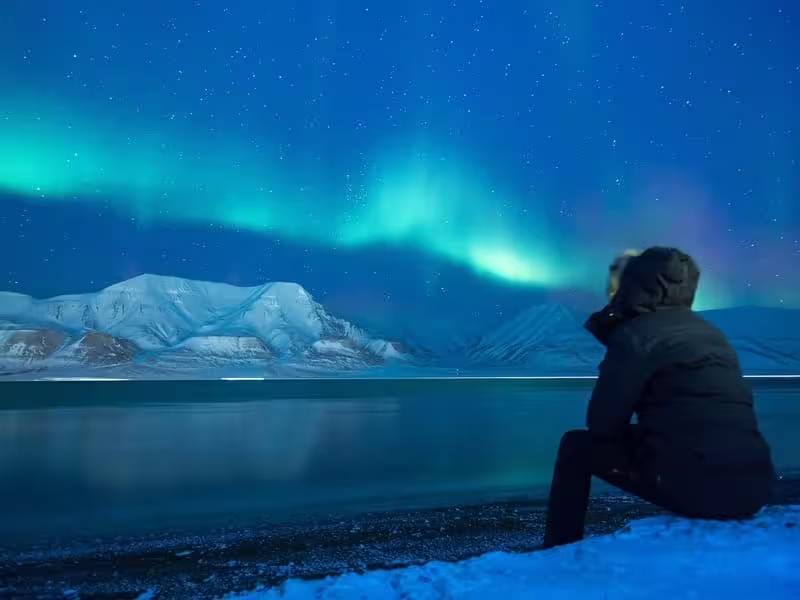
2. Best Time to Visit Alaska for Wildlife Viewing
Wildlife is a major draw, and timing is everything. Generally, May through September offers the most diverse and active wildlife viewing.
- Bears (Grizzly & Black): Late June through August is often peak, especially when salmon are running in rivers – witnessing a grizzly expertly snatch a leaping salmon from a waterfall is a truly iconic Alaskan moment. Places like Katmai National Park (Brooks Falls) and Kodiak Island are legendary. Spring (May-June) is also special for seeing mothers with new, playful cubs, a heartwarming sight.
- Whales: May to September is the main season for whale watching, particularly humpback whales engaging in spectacular behaviors like breaching and bubble-net feeding. Orcas, gray whales (during their migration in spring), and minke whales can also be seen. Kenai Fjords National Park and the Inside Passage are hotspots. I’ll never forget the sound of a humpback’s breath echoing across a quiet bay in Southeast Alaska.
- Moose: Can be seen year-round, but they are often more visible in summer along roadsides (especially at dawn and dusk) and in fall during the rut (September-October), when bulls sport impressive antlers.
- Caribou: Large herds migrate, so viewing depends on their patterns. Denali National Park is a good place to spot them, often seen as lines of travelers on distant ridges in summer and fall.
- Birds: Spring (April-May) for the spectacle of migrations, summer for nesting seabirds (like puffins in Kenai Fjords!) and vibrant songbirds. The Alaska Department of Fish and Game provides excellent seasonal wildlife viewing information.
3. Best Time to Visit Alaska for Bear Spotting
For dedicated bear spotting, particularly grizzlies (brown bears), aim for late June to early September. This coincides with various salmon spawning seasons when bears congregate predictably along rivers.
- Specific Locations: Brooks Falls in Katmai National Park is world-famous (book permits/lodging far, far in advance – often more than a year!). McNeil River State Game Sanctuary (permits via lottery) offers unparalleled experiences. Kodiak Island is home to the magnificent Kodiak brown bears.
- Tour Operators: Many specialized fly-in tours focus on ethical bear viewing, taking you to remote areas safely with knowledgeable guides who understand bear behavior. This is often the best way to get truly close but respectful encounters. When choosing a bear viewing tour, a good starting point is to check the list of National Park Service authorized commercial operators in Alaska.
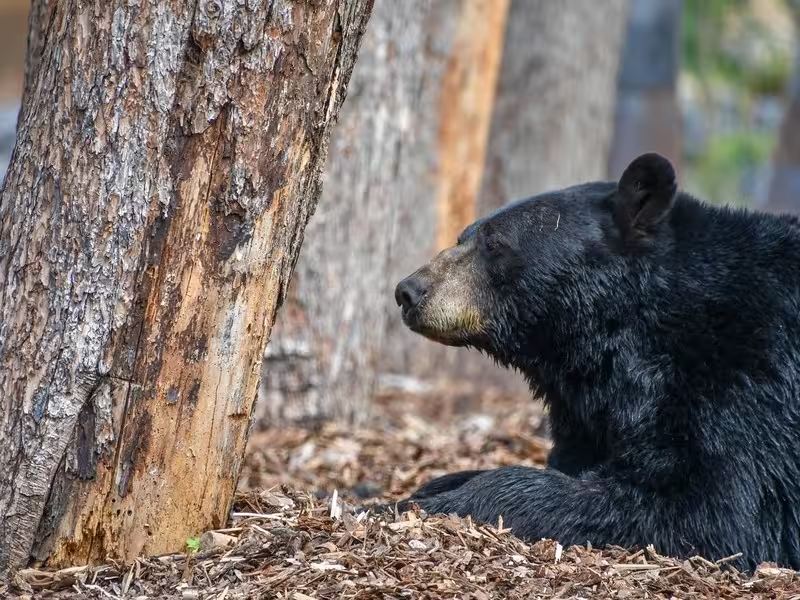
4. Best Times to Visit Alaska for National Parks
The main visitor season for most national parks like Denali, Kenai Fjords, and Glacier Bay is late May to mid-September.
- Denali National Park: The Park Road typically opens fully by early to mid-June and starts to close in sections around mid-September. Wildlife is abundant. Fall colors in late August/early September are spectacular, painting the vast tundra in hues of red and gold. Check Denali road status here.
- Persona Insight: Seeing Denali (“The Great One”) itself can be elusive due to weather. My best views have often been in the cooler, clearer air of early morning or late evening during summer, or sometimes with striking clarity in the shoulder seasons. Patience is key!
- Kenai Fjords National Park: Boat tours operate May-September, offering incredible chances to see tidewater glaciers calving and abundant marine wildlife.
- Accessibility: Many park services, shuttles, and visitor centers have reduced hours or are closed outside this main summer window. Research specific park operating dates before you go.
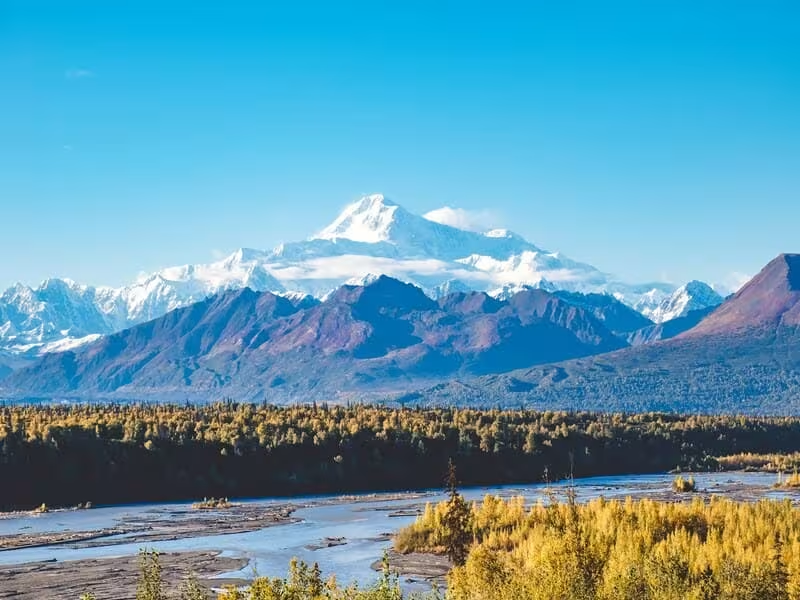
5. Best Times to Visit Alaska for Lower Prices
If budget is a key concern, consider the shoulder seasons: May (especially early May before Memorial Day) and September (especially after Labor Day). You can also find deals in winter for certain destinations, outside of major holiday periods or events like the Iditarod.
- Trade-offs: Weather can be more unpredictable, and some tours/attractions might have limited schedules or be closed. However, the savings on flights and accommodations can be substantial.
- Pro Tip: I find the shoulder seasons offer a wonderful balance. The raw beauty of awakening spring or the golden tranquility of autumn, combined with fewer people and better prices, makes for a deeply rewarding and more personal Alaskan experience.
- Finding Deals: Keep an eye on the Travel Alaska special offers page for potential packages. For flights, general strategies like booking well in advance, being flexible with your dates (mid-week flights are often cheaper), considering red-eye flights, and using flight comparison tools can yield significant savings.
6. Best Times to Visit Alaska for Good Weather
“Good weather” in Alaska is relative, but generally, June and July offer the warmest temperatures and longest daylight hours.
- Keep in Mind: Rain is possible any time of year, especially in coastal and rainforest regions like Southeast Alaska. June is often drier than July and August. The Interior (like Fairbanks) can experience warmer, sunnier days than coastal areas.
7. Best Times to Visit Alaska on a Cruise
You can find general information about Alaska cruises from the official state tourism site, Travel Alaska.
- Peak Season (June – August): Warmest weather, most wildlife activity, all excursions operating, but also the highest prices and most fellow travelers.
- Shoulder Season (May & September): Fewer crowds, potentially lower prices. May offers fresh spring blooms and more dramatic snow on the mountains. September brings beautiful fall colors and a chance for northern lights towards the end of the month on some itineraries. Wildlife is still quite active.
- Persona Insight: Smaller ship cruises, often available in shoulder seasons too, can offer more intimate experiences and access to coves and areas larger ships can’t reach, aligning well with an immersive travel style.
8. Best Times to Visit Alaska for Fishing
Fishing in Alaska is world-class, with seasons varying significantly by species and region. The peak season for many popular species is May through September.
- Salmon: King (Chinook) salmon seasons often start in May/June, a true test for any angler. Sockeye (Red) salmon, famous for their rich flavor, typically peak in June/July. Silver (Coho) salmon, known for their acrobatic fights, run later, often August/September. Landing a feisty silver on a crisp September morning is a quintessential Alaskan thrill.
- Halibut: Generally May to September for these giants of the deep.
- Rainbow Trout/Dolly Varden: Excellent fishing from June to September, often peaking when salmon are spawning (as they feed on eggs).
- A Local Angle: Many Alaskan fishing guides have their “secret spots” or preferred weeks for certain runs based on years of experience. Booking a knowledgeable local charter is invaluable. Always check current regulations with the Alaska Department of Fish and Game.
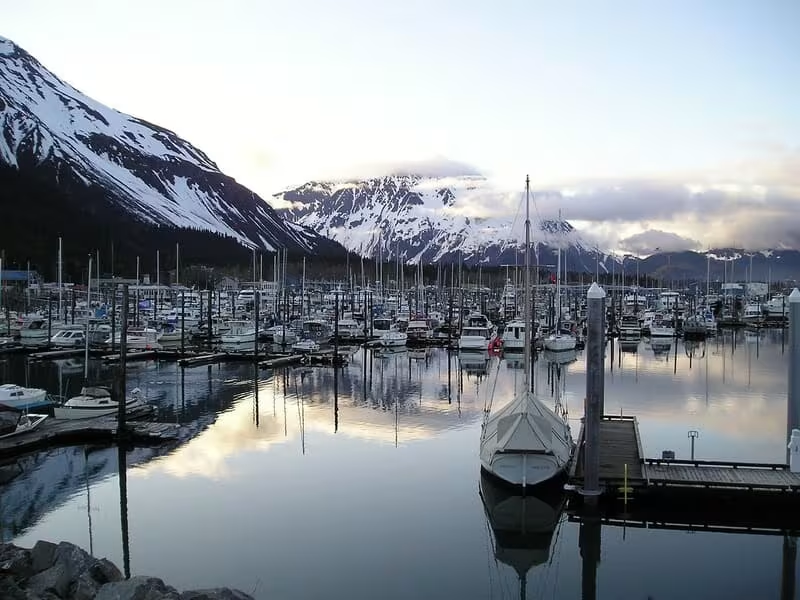
9. Best Times to Visit Alaska for Snow & Winter Activities
For a true winter wonderland experience, encompassing skiing, dog sledding, snowmobiling (or “snowmachining” as Alaskans often call it), and ice festivals, plan your trip for December through March.
- Snow Conditions: Snowpack is usually well-established and reliable, creating stunning landscapes.
- Northern Lights: Excellent chances to see the aurora during these dark months, often enjoyed from a cozy lodge or even a hot spring.
- Iconic Events: Don’t miss the world-famous Iditarod Trail Sled Dog Race which starts in early March, or the incredible World Ice Art Championships in Fairbanks (typically February-March).
Worst Times to Visit Alaska
While every season has its charm, some periods might be less ideal depending on your goals:
- “Breakup” Season (typically April to early May): This is when snow and ice melt, leading to very muddy conditions, especially in the Interior and northern regions. Trails can be messy, and some activities might not be fully operational. It’s a transition period.
- Late October to November: This can be a bit of an “in-between” time. Fall colors are mostly gone, winter snows may not have fully arrived (especially in the south), and it can be cold, dark, and damp without the full beauty of either fall or winter. Many summer tourist facilities will have closed. However, for those seeking solitude and very low prices, it could appeal, and aurora viewing can begin.
Best Months to Visit Alaska: A Quick Glance
- May: Emerging spring, fewer crowds, migrating birds, good value. Potential for lingering snow and some closures early in the month.
- June: Longest daylight hours (midnight sun!), generally good weather, start of peak wildlife, all attractions opening. Mosquitoes can be present.
- July: Warmest month, peak tourist season, excellent for fishing and wildlife, vibrant green landscapes. Book well in advance; expect crowds and higher prices.
- August: Still warm, good for wildlife (berries ripe, salmon runs continue), fall colors begin in late August, especially in the north. Rainier than June/July.
- September: Beautiful fall foliage, thinning crowds, good wildlife viewing, start of aurora season. Cooler, more variable weather. Many cruises and tours wind down mid-month.
- Winter Months (December – March): Best for Northern Lights, snow sports, winter festivals. Cold, short daylight hours.
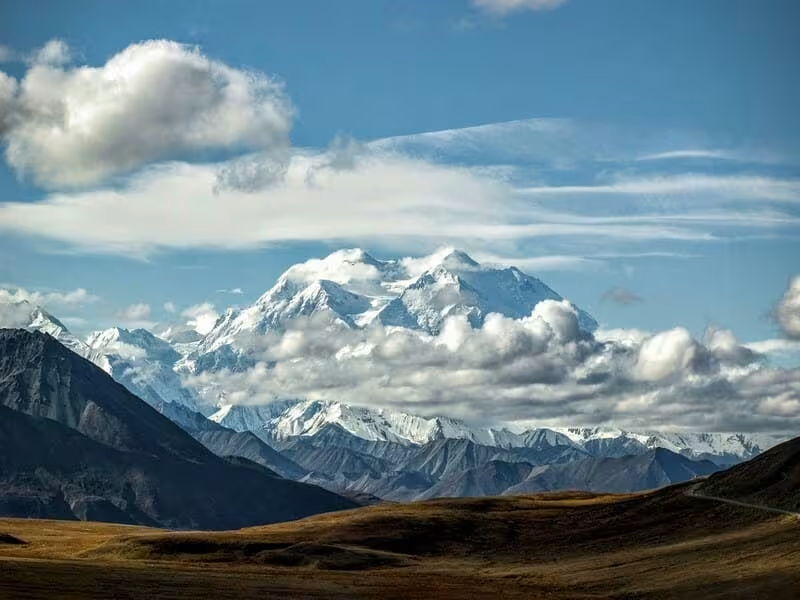
7 Things to Know About Visiting Alaska: Insights from the Trail
A little preparation goes a long way in ensuring a smooth and memorable Alaskan journey.
- Book Key Experiences WAY in Advance! This cannot be overstated, especially if traveling during peak summer (June-August) or for highly coveted experiences like bear viewing at Brooks Falls, specific Denali lodges, or popular multi-day wilderness trips. Flights, unique accommodations, and sought-after tours fill up months, sometimes even a year or more, ahead. Spontaneity is wonderful, but for Alaska’s headline acts, planning is paramount.
- Pack in Layers – And Then Add Another! Alaskan weather is famously fickle and can change dramatically in hours. Even in summer, you can experience brilliant sunshine, chilling rain, brisk wind, and cool temperatures all in one day. Waterproof and windproof outerwear, warm fleece or wool layers, and comfortable, waterproof footwear are absolutely essential. I always say, “There’s no bad weather, only inappropriate clothing.”
- Embrace the Unpredictable: Flexibility is key. Weather can change plans. Wildlife sightings are never guaranteed. The best approach is to go with the flow and appreciate whatever Alaska offers.
- Mosquitoes & Bugs: In summer, especially June and July and in areas near standing water or tundra, mosquitoes and other biting insects can be prevalent. Bring insect repellent with DEET or Picaridin and consider a head net if you’re sensitive or planning extensive backcountry travel.
- Daylight Hours: Be aware of the extreme variations. Summer offers the “midnight sun” with nearly 24 hours of daylight in the far north. Winter brings very short days, especially around the solstice. This dramatically impacts activity planning.
- Respect Wildlife – You Are a Guest in Their Home: Always maintain a safe and respectful distance from wild animals. Never feed wildlife, as it endangers both them and future visitors. Be “bear aware” if hiking: make noise, carry bear spray (and know how to use it), and store food properly. Learning about local wildlife etiquette before you go is crucial.
- Connectivity: Cell service and Wi-Fi can be spotty or non-existent in many remote areas. Consider it an opportunity to truly disconnect from the digital world and immerse yourself more deeply in Alaska’s profound natural beauty. Download maps and information offline beforehand.
6 Tips for Planning Your Alaska Vacation
- Define Your Deepest Priorities: What are the experiences that truly call to you? Is it the ethereal dance of the Northern Lights? The raw power of a grizzly fishing for salmon? The immense scale of glaciers? The solitude of the wilderness? Your core desires will heavily influence the best time for your visit.
- Set a Realistic Budget: Alaska can be an expensive destination, but it doesn’t have to break the bank. Costs can be managed by traveling in shoulder seasons, opting for camping or hostels over lodges, choosing self-drive tours, or focusing on regions with more budget-friendly options.
- Choose Your Travel Style: Do you envision an independent road trip, a structured guided tour, a luxurious cruise, or a rugged backcountry expedition? Each offers a vastly different way to experience Alaska’s multifaceted character.
- Consider Regions – Alaska is Vast! Alaska is more than twice the size of Texas. Southcentral (Anchorage, Kenai Peninsula, Prince William Sound), Interior (Fairbanks, Denali), Southeast (Inside Passage, Juneau, Ketchikan), and the Arctic all offer vastly different landscapes, climates, and experiences. Don’t try to see it all in one short trip; focus on one or two regions to explore more deeply.
- Transportation: Charting Your Course:
- Rental Car: Essential for exploring much of the road system independently, offering maximum flexibility. Book early, especially for summer.
- Alaska Railroad: An iconic and wonderfully scenic way to travel between key destinations like Seward, Anchorage, Talkeetna, and Fairbanks. The GoldStar Dome service is a treat! Riding it is an experience in itself, with summer being the prime operating season for all routes.
- Domestic Flights/Air Taxis: Necessary for reaching many remote areas, national parks not on the road system, and for unique experiences like flightseeing or bear viewing fly-ins.
- Ferries (Alaska Marine Highway System): A vital link for many coastal communities, especially in Southeast Alaska, and a more leisurely way to travel and see the coastline.
- Cruises: A popular way to see the coastal wonders of the Inside Passage and Southcentral Alaska.
- Mount Denali (formerly Mount McKinley): North America’s highest peak is a majestic sight, but it famously creates its own weather and is often shrouded in clouds (some say only 30% of visitors get a clear view). Your best chance of seeing it is typically early in the morning. Summer offers the most access to Denali National Park, but even then, a clear view isn’t guaranteed.
Alaska Climate at a Glance
Understanding the general climate patterns can help you pack and plan. Note: These are general averages and can vary significantly by specific location and year.
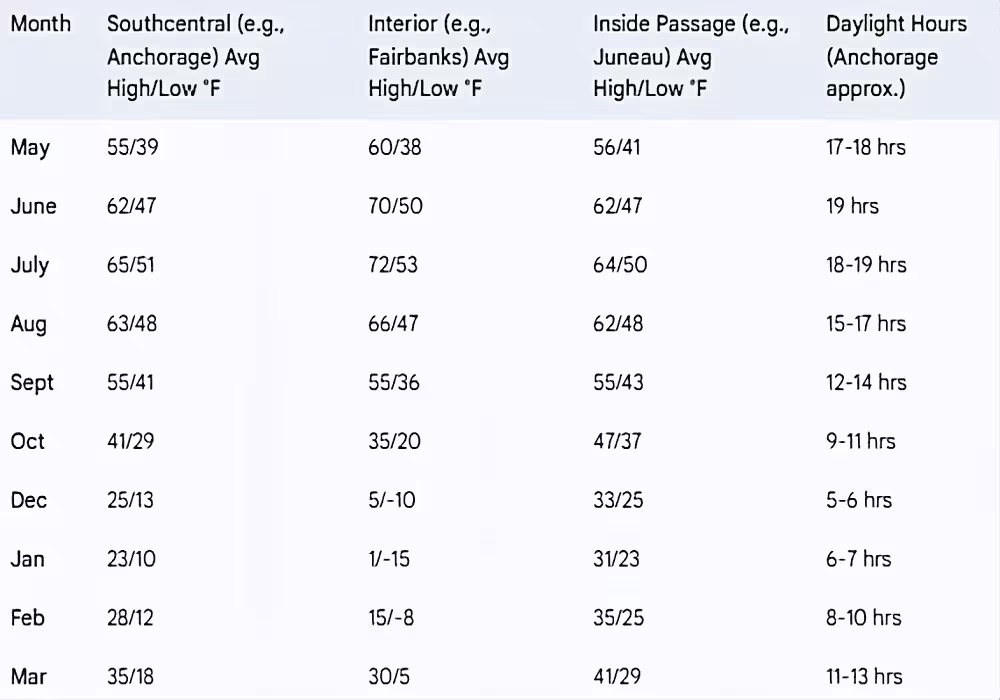
For more detailed and localized weather data, I always recommend checking sources like the NOAA National Weather Service closer to your travel dates.
FAQs about the Best Time to Visit Alaska
Here are answers to some frequently asked questions I encounter from fellow travelers dreaming of the Last Frontier.
What are the best months to visit Alaska?
For a combination of good weather, accessible activities, and wildlife viewing, June, July, and August are generally considered the best months. However, May and September offer excellent value, fewer crowds, and their own unique appeals like spring blooms or fall colors and early aurora chances.
What is the best time to ride the Alaska Railroad?
The Alaska Railroad’s main summer season runs from mid-May to mid-September, which is the ideal time to experience their full schedule and scenic routes like the Denali Star or Coastal Classic. June and July offer the longest daylight for viewing, while September can provide stunning fall colors along the tracks. Winter services are more limited but offer a unique snowy landscape experience.
What’s Alaska like the rest of the year?
Outside the main summer tourist season, Alaska takes on a different character.
- Late Fall (Oct-Nov): A quiet, transitional period. Colder, shorter days, many tourist services closed. Can be a good time for solitude and early winter feel before heavy snow.
- Winter (Nov-Mar): Cold, snowy, short daylight hours but prime for Northern Lights, dog sledding, skiing, and winter festivals. A magical, quieter time.
- Early Spring (Apr-early May): “Breakup” season with melting snow and mud. Wildlife starts to emerge. Fewer tourists, but some areas still inaccessible or services limited.
What is the best time for an Alaska vacation?
This truly depends on your interests!
- For general sightseeing, wildlife, and national parks: June to August.
- For Northern Lights: Late September to March.
- For cruising: May to September.
- For serious fishing: Varies by species, but generally May to September for salmon and halibut.
- For budget travel and fewer crowds: May and September (shoulder seasons).
- For an immersive winter wonderland experience: December to March.
What to pack for a trip to Alaska?
Layers are paramount, regardless of the season. Essential items include:
- Waterproof and windproof outer jacket and pants.
- Warm fleece or down layers.
- Thermal underwear (especially for fall/winter/spring).
- Comfortable, waterproof hiking boots or shoes.
- Hat, gloves, and scarf (even in summer for cool evenings or boat trips).
- Insect repellent (summer).
- Sunscreen and sunglasses (the sun can be strong, especially with reflection off snow or water).
- Binoculars (for wildlife viewing).
- Camera with extra batteries/memory cards.
- A reusable water bottle.
- For winter: Extremely warm winter coat, insulated boots, thermal layers, face protection.
A Quick Recap: Finding Your Alaskan Heartbeat
Choosing the “best time” to visit Alaska is less about a single perfect window and more about matching the season to the Alaskan experience you crave.
Are you drawn to the boundless energy of the midnight sun and the vibrant greens of summer, teeming with wildlife and accessible adventures?
Then June through August will feel like a dream. Perhaps it’s the crisp air and fiery foliage of September, with the first hints of the aurora in the darkening skies, that calls to your soul.
Or maybe the profound silence of a winter landscape, illuminated by the ethereal dance of the Northern Lights, is the Alaskan magic you seek.
From my years of wandering, I’ve learned that Alaska’s true essence is revealed not just in its grand landscapes, but in the subtle shifts of its seasons, each offering a unique rhythm and a different way to connect with its wild heart. Consider what makes your traveler’s spirit sing, and you’ll find your perfect Alaskan moment.
If you found these insights helpful, I’d be thrilled if you shared it with fellow adventurers planning their own Alaskan journeys!
Further Exploration: More Adventures with Coffee Tea Travels
Beyond Alaska’s icy grandeur, my seven years of immersive travel have taken me through vibrant cities and unforgettable culinary quests around the world. If you’re curious about other destinations or food experiences, here are a few you might enjoy:

